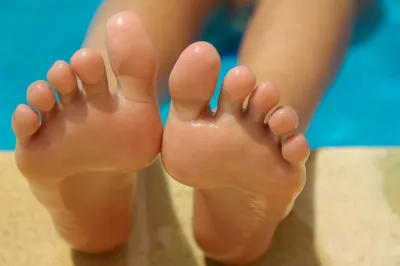News and Articles From
Dr. Klein
Arch Pain

Adults and kids are equally prone to pain here.
In kids, flat feet are most often the foot type that causes arch pain, whereas in adults, high arches can also be the culprits.
Arch pain can occur because of an injury, but most often that isn’ the cause.
Having a job that involves standing all day can predispose you to pain in this part of the foot.
The symptoms of arch pain can be aching, sharpness, cramping, or throbbing sensations.
There are several causes of arch pain, but three of the most common are:
Tendinitis
There are a few tendons that attach to bones near the arch of the foot. One of them can get strained, causing pain with every step.
Someone with flat arches (Flatfeet) is more prone to straining one of these tendons. The pain can occur in the arch or bottom of the foot, the inside of the ankle, or the top of the foot.
Pinched Nerve
Just like Carpal Tunnel in the hand, a nerve in the foot can get pinched, causing pain in the arch. The term is Tarsal Tunnel. The nerve gets pinched just below the ankle but the pain can radiate to the arch.
The symptoms of a pinched nerve are sharpness, aching, cramping, or pins and needles. Pain from a pinched nerve can be bothersome even when sitting or lying down, unlike pain from a tendon, ligament, or bone.
Plantar Fasciitis
This condition is much more common in the heel but can occur in the arch. A person with a low or high arch can strain the plantar fascia. Usually, the pain is very localized to the arch as opposed to the other two conditions noted here.
If you have pain in your arch(es), start by making sure your shoes have good support.
If shoes make your arch hurt more, it could be a sign of a pinched nerve or a torn tendon.
As with most other foot conditions, temporarily avoid jogging and jumping to allow the foot to rest. Ice and an anti-inflammatory can help.
A soft and inexpensive store-bought insert may relieve some of the pain. Being barefoot on a hard surface isn’t recommended.
As always, if your arch hurts for more than a couple of weeks, having us evaluate it is in your best interest.
We’ve discovered tears, broken bones, and tumors that could have caused long-term suffering had the patient waited too long.
Long-standing pain in the arch of the foot can be difficult to relieve. In some cases, we’ve had to resort to a cast or surgery.
We are here to help you get fast relief and avoid surgery.
To Pain-Free Feet,
What is SESAMOIDITIS?

If you’ve had or have pain under the big toe joint you could’ve had or have a problem with one of the sesamoids. These bones are two of the smallest in the foot but a condition of them can hurt as much as any other bone.
Inflammation of one of the sesamoids goes by the medical term of SESAMOIDITIS. This condition occurs from repetitively putting too much pressure on the big toe joint. Sesamoiditis can also occur from coming down hard on the ball the foot.
People with high arches put more pressure on the balls of the feet than those with normal or low arches. A fracture of one of the sesamoid bones is another common problem we see under the big toe joint. This can be a very difficult condition to heal.
Because of how difficult it can be to heal a sesamoid problem, it’s mission critical to have any pain on the ball the foot diagnosed as early as possible.
Surgery has been an unfortunate result in situations where a sesamoid problem was left untreated for too long.
If you have mild pain on the ball of your foot be sure to wear shoes with a good amount of cushion and add an over-the-counter cushioned insert.
It would also be wise to avoid running and jumping until the pain subsides.
They may be small and ignored but sesamoids can wreak havoc on the foot. You now know that you have four more bones in your body than you thought.
If you are posed with a trivia question about how many bones there are in the foot the answer they are looking for is 26, but you can wink at your friends and whisper to them “the real number is 28.”
To Healthy Feet,
